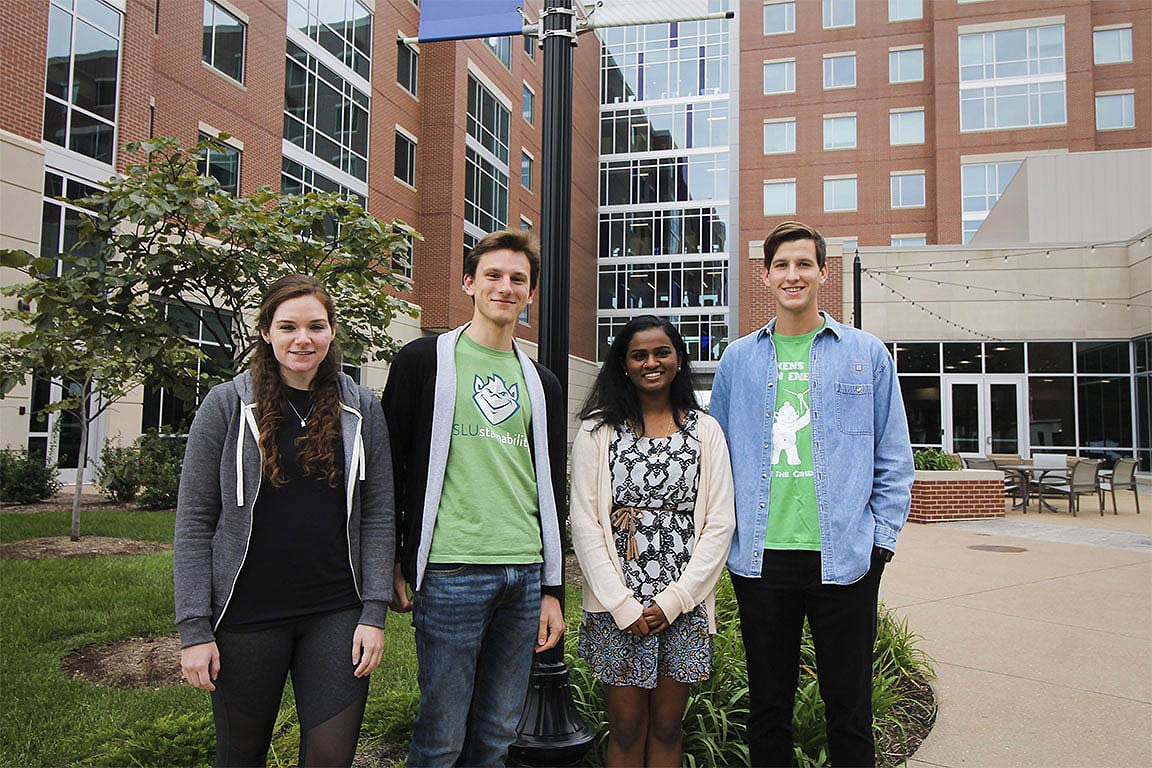SLU Makes EPA’s Green List
Because of an initiative launched by students, Saint Louis University has been recognized by the Environmental Protection Agency for its use of green power.
SLU residence halls now are part of the EPA Green Power Partnership, among more than 1,600 entities that collectively use more than 50 billion kilowatts of green power annually, an amount equivalent to the electricity use of more than 4.6 million average American homes.
The Green Billikens student group, which was founded by graduating senior Douglas Fritz, spearheaded the effort to replace all electricity used in residence halls with renewable energy produced through Midwest wind farms. In agreeing to purchasing renewable energy certificates, SLU became Missouri’s first university or college to participate in Ameren Missouri’s Pure Power Program.
“This recognition elevates to the national level our work to make this campus and the greater community a greener place,” Fritz said.
“Around the U.S., concerned citizens and local governments are looking to higher education to show them the way to a more sustainable future and our increasing commitment to renewable energy does just that.”
In the year since the program’s inception, SLU has replaced 8 million kilowatts of energy made from fossil fuel with certificates to purchase clean, renewable energy. SLU intends to increase that commitment at least twofold in the upcoming year, Fritz said.
SLU students voted to tax themselves $20 a semester to reduce their carbon footprint to help defray the cost of purchasing Renewable Energy Certificates to replace energy used in residence halls. This commitment to green power aims to help reduce the negative health impact of ozone, fine particles, acid rain and regional haze.


















